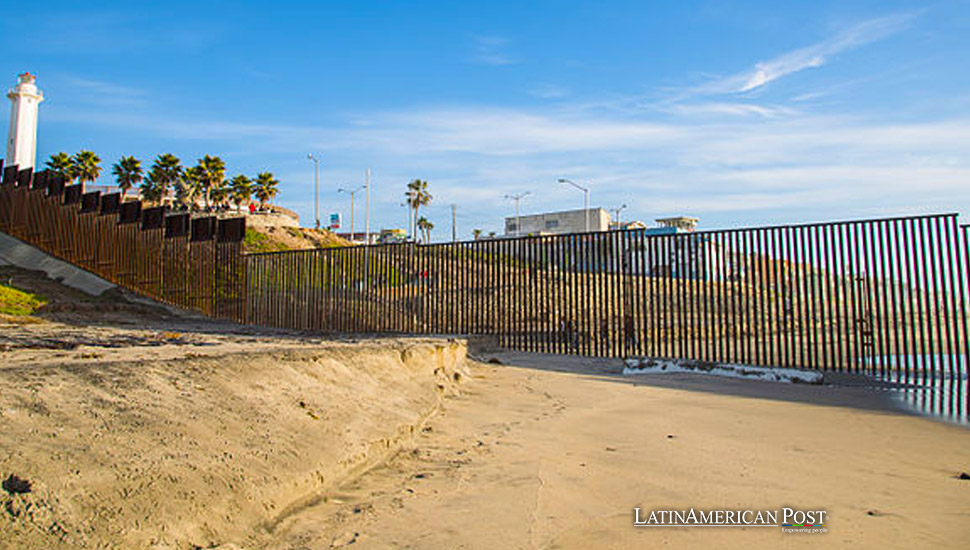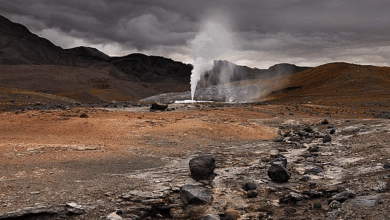Rising Human Trafficking Crisis at Mexico-California Border Concerns Authorities

The surge in human trafficking at the Mexico-California border, the busiest in the hemisphere, is alarming regional authorities. This billion-dollar crime leaves countless victims, particularly among migrants and refugees.
The increase in human trafficking at the Mexico-California border, the busiest in the Western Hemisphere, is causing significant concern among regional authorities. This lucrative crime is victimizing an increasing number of individuals, especially migrants and refugees. On Thursday, Californian and Mexican authorities and non-governmental organizations gathered in Chula Vista, California, to strengthen their collaborative efforts against this growing issue.
Human trafficking for sexual exploitation alone generates $810 million annually in San Diego County, according to the District Attorney’s office. “On average, victims are 16 years old, but we’ve rescued children as young as 12, exploited and forced to have sex with strangers for money,” said Dave Owen, an investigator with the San Diego District Attorney’s office. San Diego’s border location makes it a high-demand site for trafficking, with more than 360 victims rescued each year.
Authorities believe many more victims remain exploited and undiscovered. A recent undercover operation highlighted the scale of the problem during Comic-Con International, where 14 people were arrested and ten victims were rescued. This annual event attracts over 100,000 fans to San Diego, making it a hotspot for traffickers.
Migrants Targeted by Traffickers
Migrants and refugees are particularly vulnerable to traffickers, warned Roxana Kennedy, Chief of Police in Chula Vista. Traffickers prey on their vulnerability and desire for a better life in the United States. Chula Vista, located just seven miles north of the world’s busiest border crossing, sees a significant trafficking problem. “The border is not just a line on a map; it’s also a major attraction for human traffickers,” Kennedy noted. Victims in the area come from all races and ages, unified by their exploitation for profit and control.
Alicia Kerber Palma, Mexico’s Consul in San Diego, urged joint actions on both sides of the border and called for public cooperation. “If you see something, say something,” emphasized the diplomat. The binational meeting was convened by the International Network of Hearts, a nonprofit organization working for over 20 years to stop human trafficking and exploitation in the binational region.
Alma Tucker, President of the International Network of Hearts, explained that the dynamic and tourist-heavy nature of the region makes it an ideal ground for traffickers. “In massive events, like concerts or sports events, these criminals infiltrate to convince girls, teenagers, and women, who are often forcibly subdued,” she elaborated. Social media is a significant hunting ground for these criminals, spending hours and days seeking vulnerable individuals, particularly minors.
The meeting, titled ‘Two Regions One Border: On Binational Human Trafficking,’ served as a platform for organizations from both sides of the border to learn how to identify signs that a minor or individual is a victim of trafficking and exploitation. Members were trained to recognize red flags and implement strategies to protect and rescue victims.
The Broader Impact and Next Steps
The human trafficking crisis at the Mexico-California border not only affects the immediate victims but also has broader social and economic implications. Migrants and refugees, already vulnerable due to their status, are often targeted by traffickers who exploit their desperation. This ongoing crisis calls for a multifaceted approach that includes prevention, protection, and prosecution.
The collaboration between U.S. and Mexican authorities and non-governmental organizations is crucial in combating this issue. By sharing resources, intelligence, and strategies, these entities can more effectively address the complex and transnational nature of human trafficking. Public awareness campaigns and community engagement are essential in identifying and rescuing victims.
Moving forward, authorities plan to increase their efforts to combat human trafficking through enhanced border security, better victim support services, and more robust legal frameworks to prosecute traffickers. Training for law enforcement and community members on identifying and responding to trafficking situations will be expanded.
Despite these efforts, significant challenges remain. Traffickers use sophisticated networks and technology to adapt their methods to evade detection continuously. The high volume of cross-border movement complicates efforts to monitor and control trafficking activities.
Moreover, the social stigma and fear of retribution often prevent victims from coming forward. Many trafficked individuals, especially migrants, fear deportation or further harm if they seek help. Providing safe and supportive environments for victims to report crimes and receive assistance is crucial.
In addition, the legal and bureaucratic complexities of operating across two national jurisdictions can hinder collaborative efforts. Streamlining processes and improving communication between U.S. and Mexican authorities is vital for effective action against traffickers.
Community Involvement and Support
Community involvement plays a pivotal role in combating human trafficking. Educating the public about the signs of trafficking and encouraging them to report suspicious activities can lead to more victims being rescued. Local organizations, religious groups, and community leaders can support victims, helping them rebuild their lives and integrate into society.
Victim support services must be robust, offering medical care, psychological counseling, legal aid, and housing. Education and job training can empower survivors, reducing their vulnerability to re-trafficking and enabling them to lead independent lives.
The efforts of organizations like the International Network of Hearts highlight the importance of grassroots initiatives in tackling human trafficking. By working closely with communities, these organizations can build trust and create safe spaces for victims to seek help.
The rising human trafficking crisis at the Mexico-California border is a pressing issue that requires urgent and sustained action. The collaborative efforts of authorities and organizations from both sides of the border are crucial in addressing this complex problem. By enhancing border security, increasing public awareness, and providing comprehensive support to victims, progress can be made in combating human trafficking.
Also read: U.S. and Mexican Border Towns Desperately Seek Aid as Sewage Floods into the Ocean
The fight against human trafficking is far from over. Still, with continued dedication and cooperation, it is possible to make significant strides in protecting the vulnerable and bringing traffickers to justice. The commitment of communities, law enforcement, and non-governmental organizations will be essential in creating a safer and more just society.





